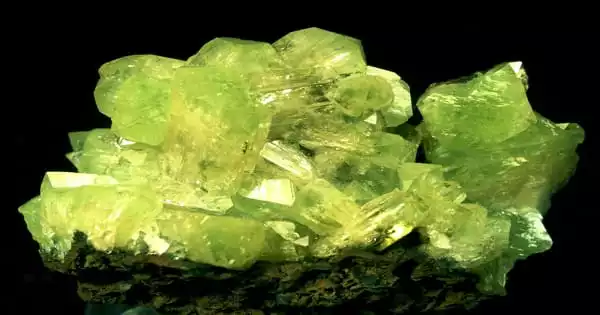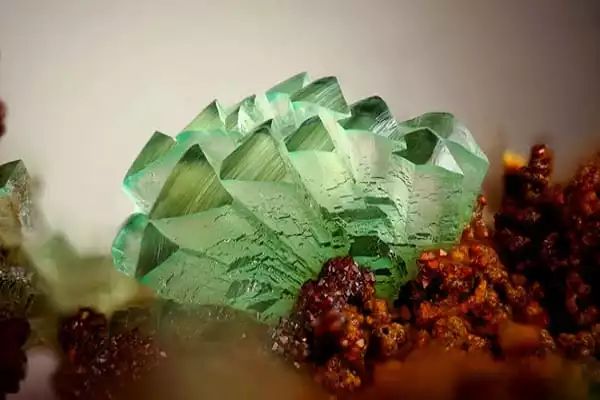Description
Adamite is a zinc arsenate mineral that was identified in Chile for the first time in 1866. In 1866 it was named by Charles Friedel after Gilbert Joseph Adam, the French Government’s Inspector (Auditor) of Finance, who provided the first specimens of his mineral.
Adamite is a zinc arsenate hydroxide mineral that appears as a clear to translucent botryoidal radiating habit. Adamite is a member of the Phosphate Class’s Arsenate subclass. Adamite, the copper arsenate Olivenite, and the intermediate, structurally different component Zincolivenite create a solid solution.
Zincolivenite is a separate intermediate member of this group.
Adamites can take on a variety of hues due to the presence of several impurities. Iron (Fe), for example, can give yellow tints. Green colours can be seen in Cuprian (Cu bearing) types. Rose or purple/violet colours can be seen in specimens containing cobalt (Co). Manganoan or manganese (Mn) containing specimens can be purple/violet, pink, or lavender in hue.
Mexico, Namibia, Russia, China, New Zealand, British Columbia, Canada, and Taiwan are all home to adamite. Namibia and Mexico have produced some of the most beautiful Adamite specimens.
Uses
The heart, lungs, throat, and glands are all supported by adamite. Adamite stimulates the endocrine system, especially the release of hormones associated with love and joy. This can help those who are sad or have severe symptoms connected to hormonal imbalances like PMS and SAD, as well as other cyclical hormone abnormalities. It can help with the mental fog that comes with hormone imbalances, chronic fatigue syndrome, or a general lack of power. Adamite is beneficial for finding delight in physical activity and expression, as well as for those who need to reconnect with their body or who want to lose weight or improve their physical fitness.
If someone ever needs to concentrate on a certain job or make a difficult decision, Adamite can help. It is suitable for meditation.
The hardness of adamites is 3.5, and they have good cleavage. As a result, they produce jewelry that is less than ideal.

Characteristics of Adamite:
- Category: Arsenate mineral.
- Formula: Zn2AsO4OH.
- Occurrence: Secondary mineral found in the oxidized zone of ore deposits.
- Colours: Colourless, Pale yellow, honey-yellow, brownish yellow, reddish; ideally white, blue, pale green to green.
- Crystal system: Orthorhombic.
- Crystal class: Dipyramidal (mmm).
- Crystal habit: Wedge-like prisms seen in druses and radiating clusters, as well as smooth botryoidal masses.
- Fracture: Uneven to subconchoidal
- Tenacity: Brittle
- Luster: Vitreous
- Specific gravity: 4.32 – 4.48
- Hardness: 3.5 on Mohs Scale
- Cleavage: Distinct/Good
on {101}, good; on {010}, poor.
Because Adamite is an extremely rare crystal that is only found in small bits, it’s typical for users to combine it with an enhancing crystal-like Quartz or Rose Quartz to enhance the benefits. Rose Quartz, as well as other heart and solar plexus stones like Citrine and Heliodor, will add fuel to that “inner fire.” Any faraway goal or desire will become a not-so-distant reality you’ll be able to work towards reaching thanks to your increased drive and dedication.





